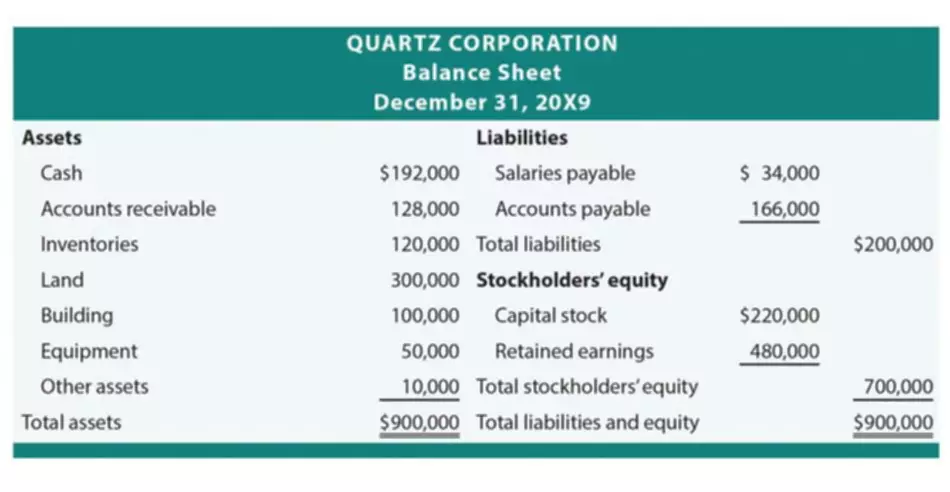Content

In most cases, accountants consider the percentage of total raw material, labor, and overhead costs that have been incurred to determine the number of partially completed units in WIP. The cost of raw materials is the first cost incurred in this process because materials are required before any labor costs can be incurred. WIP is a concept used to describe the flow of manufacturing costs from one area of production to the next, and the balance in WIP represents all production costs incurred for partially completed goods. Production costs include raw materials, labor used in making goods, and allocated overhead. As a business owner, your production cycle is where you can make or lose money. That’s why it’s so important to track your production costs throughout the cycle and not just when you buy raw materials or sell finished products. An important term to understand if you want to ensure you’re making a profit is “work in progress,” also sometimes referred to as “work in process,” or WIP for short.
Which is better in progress or in process?
These terms mean the same thing, and there is no difference between them in terms of actual usage. In progress is the more popular version at this point in history, by a factor of several times.
The WIP figure also excludes the value of finished products being held as inventory in anticipation of future sales. By identifying the difference between work in process inventory and work in progress inventory, you’ll help to improve your company’s production capabilities.
By team size
Generally speaking, it’s considered best practice to carry as little WIP Inventory as possible. Having too much WIP inventory on-hand can be an indication of bottlenecks https://www.bookstime.com/ in your manufacturing or procurement process. In all three of these scenarios, you have unfinished goods at some stage of the process that are considered WIP inventory.
Work-in-process inventory pertains to the goods for which the manufacturing has begun, but not yet completed. More examples The three categories of stock are raw materials, work-in-progress and finished goods. In the case of manually operated production, outside automation components can be used to make processing proposals or decisions. Manufacturing outfits with predictable assembly line times present WIP items as a percentage in their accounting. They derive this percentage based on previous estimates of completion and product manufacturing times. As such, the difference between WIP and finished goods is based on an inventory’s stage of completion relative to its total inventory. For example, suppose XYZ Roofing Company provides its residential clients’ bids for roof repair or replacement.
Work-in-Progress: Accounting Examples
Our team has extensive knowledge of environmental, social and governance issues domestically and internationally. This allows us to provide you with an unparalleled level of insight into companies’ performance against these criteria. We believe in helping companies understand what investors are looking for in responsible businesses and help investors understand how companies are performing against ESG criteria. In addition to what goes into recording the accounting data, there are some other important things to keep in mind. Generally accepted accounting principles require the amount of each type of inventory to be disclosed in the financial statements. Also, some financial institutions will not accept work-in-process inventory as collateral for a working capital line of credit, reasoning that the inventory cannot be instantly liquidated if a default occurs. Surprisingly, the number one cause of production downtime is still human error.
- The person working on the WIP typically has the intention of finishing it.
- Event-driven dispatching systems respond to planned and unanticipated events on the production floor by evaluating events and resources in real-time in order to optimize production flow.
- Keeping too much work in progress can lead to a number of problems, including a loss of money and not having enough workers or machines.
- The conversion of raw materials to work-in-progress materials requires the use of labor.
- ShipBob’s technology fully integrates with your store to easily manage all inventory and orders from one central dashboard while they fulfill your orders on your behalf.
- To keep things at optimal levels means that the company can efficiently minimize its WIP.
To calculate ending WIP inventory, you need beginning WIP inventory, which is the previous reporting period’s ending WIP inventory. Total WIP Costs are calculated as a sum of WIP Inventory + Direct Labor Costs + Overhead costs. The restaurant may also have capital costs like monthly rent payments for its premises and maintenance on equipment used to make food.
Small business
That’s because once you’ve finish mixing the clay, you report the clay as completed on its own production order. Most non-accountants think of work-in-process as a description of the physical state of inventory in a manufacturing operation. For example, you have something on the shop floor that you’ve done something to, but you still have more things to do to it before it is a finished item. If it weren’t for computerized MRP / ERP inventory systems and accountants, that simple description would probably hold true.

Finally, WIP limits point out areas of chronic idleness or overload. They help the team see inefficiencies in the entire process rather than just the particular area in which they work. Let’s see if you’ve fundamentally understood what work in process inventory is.
However, you won’t find the real value of any materials that haven’t been incorporated into the intermediate production stage. You would think that the inventory we describe as WIP based on its physical state would be the same inventory represented work in process by the WIP account. Okay, you say, but that still sounds like the value of the inventory we call work-in process based on the physical state. Imagine BlueCart Coffee Co. has a beginning work in process inventory for the quarter of $10,000.

And, finally, once the WIP inventory becomes finished goods, the $5,000 is debited to the finished good account and $5,000 is credited back to the WIP inventory account. Supply chain and managing all types of inventory are established fields of expertise now. And one thing that these professions agree on is that it’s usually best to minimize work in process inventory.
This refers to all the bags, labels, beans yet-to-be-ground, and other raw materials waiting to be turned into finished bags of coffee ready for sale. Company’s Balance SheetA balance sheet is one of the financial statements of a company that presents the shareholders’ equity, liabilities, and assets of the company at a specific point in time. It is based on the accounting equation that states that the sum of the total liabilities and the owner’s capital equals the total assets of the company. Cost Of Goods ManufacturedCost of Goods Manufactured Formula is value of the total inventory produced during a period and is ready for the purpose of sale. It is calculated by adding manufacturing costs, value of work-in-process inventory at the beginning and then subtracting ending value of goods-in-process. These three journal entries are repeated every time raw material, labor, and overhead are introduced into the product. At each stop on the assembly line, raw materials, labor, and overhead are being added to the product.
Kirsten is also the founder and director of Your Best Edit; find her on LinkedIn and Facebook. Full BioMichael Boyle is an experienced financial professional with more than 10 years working with financial planning, derivatives, equities, fixed income, project management, and analytics. Post-Closing Adjustment Amount shall have the meaning set forth in Section 2.4. Estimated Adjustment Amount has the meaning set forth in Section 3.2. Final Adjustment Amount shall have the meaning set forth in Section 2.14. Final Adjustment has the meaning set forth in Section 10.3.B hereof. Each WIP Adjustment shall be determined on an aggregate basis netting out over and under accruals for such period.
QuickBooks Products
One of the advantages of calculating it manually will be you can add expenses like the cost of scrap, spoilage of raw material, etc. as well in it since it is all visible during physical counting. This type of inventory management system can be costly since you’re making products as they run low instead of before, but it’s great for companies that have higher sales.
Is work in progress a depreciation?
As a result, the construction-work-in-progress account is an asset account that does not depreciate.

